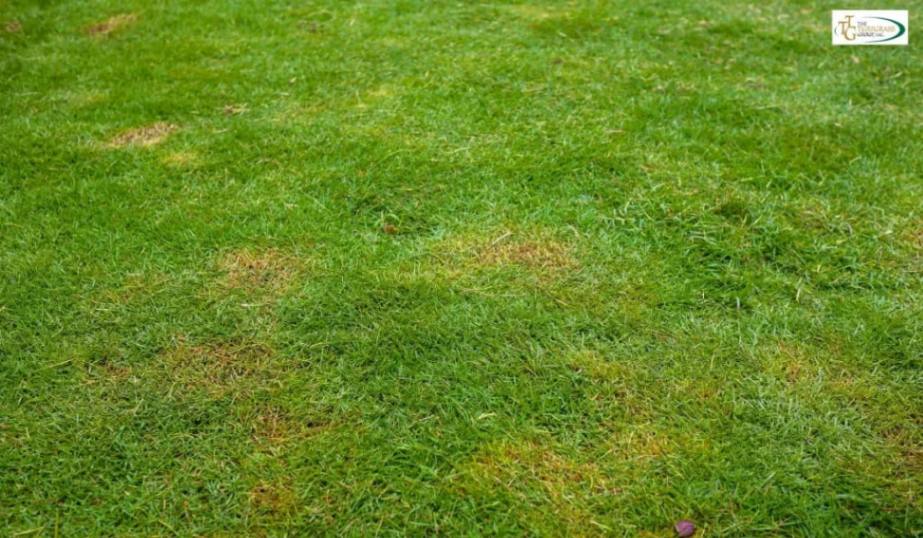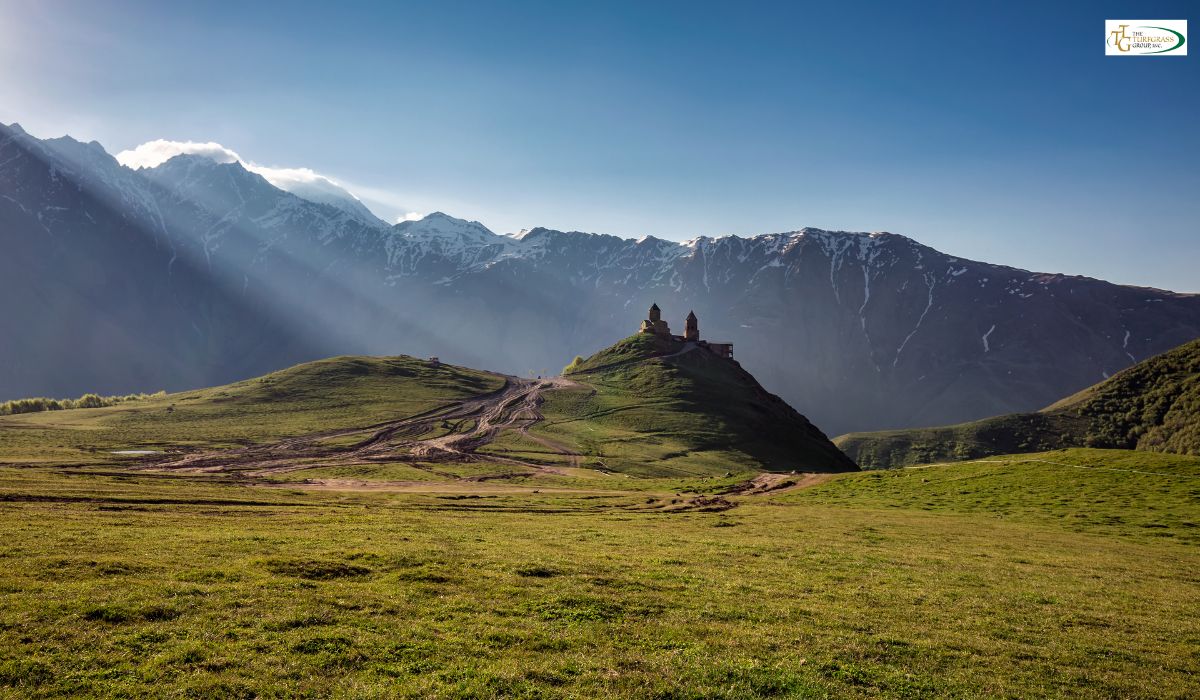
Trinity Zoysia Grass is becoming a turfed variety fast winding up the list among the clientele.
Densely covered with lush green coloring, this hardy turf variety gives more than an eye-pleasing appearance.
This richly green-colored turf has set waves due to its sight of growing under extreme weather conditions among people looking for that perfect lawn.
But what makes it different from other types of grass?
Is it perhaps the low-maintenance aspect or its capability to be resilient in heat and dryness?
As we look further into this wonderful grass genus, you will find its distinguishing features and the difficulties it entails in preserving such beauty.
Whether you intend to install one in your backyard or look for ways to enhance your landscaping business services, it helps you to be well-equipped with important information about Trinity Zoysia Grass.
Be ready to find out about its benefits and practical maintenance tips.
Let’s start this journey towards that covetable lawn!
Characteristics and Benefits of Trinity Zoysia
In the description, Trinity Zoysia features a bright green color with a fine texture.
Warm-season grasses like this are adapted to do well in many climates and are, therefore, widely available to homeowners and landscapers.
It creates a beautiful lawn with a dense growth habit resistant to weeds.
A significant advantage of Trinity Zoysia is that it does not mind the drought.
Being very low in water requirements, one only needs to water a little once it has established compared to other grass types, which tremendously saves maintenance.
It would be perfect for areas with dry spells or little sources for irrigation.
Another distinctive feature worth mentioning here is its high wear tolerance.
Trinity Zoysia can bear heavy foot traffic.
It is ideal for high-activity areas, such as sports fields and playgrounds.
Families with kids or pets will love how well this turf stands up under pressure.
Another reason is that Trinity Zoysia has a deep root system that improves soil stability while promoting healthy nutrient uptake.
The resilience ensures your lawn remains lush even during periods of stress caused by hot or cold snaps.
A low growth rate means fewer times to mow, which is an attractive factor for those preferring minor upkeep without losing the aesthetic look in the outdoors.
Put together, these features make Trinity Zoysia an ideal choice for whoever wants to beautifully enhance their landscape without much hassle.
Challenges and Maintenance of Trinity Zoysia

Homeowners love their Trinity Zoysia grass, but it has its downsides.
For instance, it is problematic to establish grass and grows relatively slowly, often requiring much time before the bare spots are covered.
This will require a rather lengthy wait when establishing for the first time.
Another challenge it poses is its requirement for water.
Although once established, it stands out with drought resistance; young Trinity Zoysia needs a regular moisture supply during its early stages.
This may lead to an overwatered condition that becomes prone to problems, including root rotting or even under-watering.
Under-watering may cause slowing of growth, thinner blades, and discoloration.
Weeds can be another problem.
While this type of grass crowds out some weeds as time progresses, aggressive weed seeds such as crabgrass will still find their way into your lawn unless managed correctly.
The grass must be checked regularly and properly inspected to maintain lawn health.
There are pests and diseases, among other considerations, that owners must be mindful of.
Fungus problems do occur if the turf is not well-aerated and during wet weather, of course.
Knowing possible signs of stress will help you find a problem when it has just begun.
Mowing practices form a very significant part of maintenance.
It will ensure that mower blades remain sharp and observed to follow the recommended height guidelines, thereby fostering healthy regrowth and avoiding the damaging effects of scalping that may hurt the turf’s resistance over time.
Trinity Zoysia in Various Environments
Trinity Zoysia grass is relatively versatile, thus being a very multifaceted option for the home and landscape.
Generally, it tolerates climate well and makes it possible for the grass to thrive in both warm and transitional regions.
It can withstand extreme heat; therefore, the type of grass makes it suitable for use in places with extreme temperatures.
Of note, Trinity Zoysia has impressive cold tolerance compared with most other zoysias, staying green much longer into the fall season and recovering rapidly from winter dormancy, making lawns stay lively even as temperatures dip.
It also does well under different sunlight conditions.
Whether in direct sunlight or partial shade, Trinity Zoysia looks lush and competes with weeds effectively.
Shade’s benefits to homeowners are tremendous in this area.
Coastal areas are also quite tolerable for this grass because it endures salty conditions.
Houses built close to beaches have unique issues, such as salty air and sandy soil, but with Trinity Zoysia, there is no loss of health and beauty in facing these conditions.
Foot traffic and pollution are the challenges an urban setting offers.
With its strength, Trinity Zoysia is a fabulous choice for a park or residential lawn that gets exposed to frequent use without revealing much wear over time.
Certified Purity and Cultivation of Trinity Zoysia
Next, Trinity Zoysia grass is gaining popularity because of its lush appearance but also because of its certified purity.
Cultivation ensures that it will keep up the high standards by evading contamination that would include other varieties of turf.
This ensures quality control that leaves homeowners peace of mind when planting it on their lawns.
Certified purity is assured using selective propagation techniques in growing.
Trinity Zoysia blades are guaranteed to meet specific quality benchmarks with disease-free seeds and vegetative cuttings.
It is lots of work, but the payoff is vibrant, healthy grass.
In addition, the environmental factors are carefully controlled.
Parameters such as soil pH, moisture levels, and sunlight exposure are all considered closely in the entire process of growing.
These are details that eventually contribute to the strength and durability commonly attributed to Trinity Zoysia grass.
Farmers generally agree that obtaining your sod or seeds from reputable providers who can offer proof of certification is essential.
It makes all the difference when you know where your Trinity Zoysia comes from as far as achieving the best possible growth in your yard.
That’s the foundation you will have before introducing Trinity Zoysia to your landscape design or lawn care routine.
Time spent learning all this will reward you with healthy roots and robust, thriving greenery.
Professional Tips to Maintain Trinity Zoysia Grass
Successful maintenance practices toward Trinity Zoysia grass should strategically maintain a healthy and thriving grass state.
Initial maintenance is given by frequently mowed grass, but the height is between one and two inches.
This will help the grass thrive with minimal competition from weeds.
Watering is another critical consideration.
For the warmer months, watering is encouraged to about an inch a week.
Deep watering stimulates deeper root growth and dries tolerance.
The best time to do watering is in the early morning to minimize evaporation.
Fertilization is the main thing sustaining this type of grass.
A slow-release nitrogen fertilizer in the spring will promote quick growth without overwhelming the lawn with too many nutrients.
Follow up with a second application mid-summer for maximum effect.
Aeration will benefit Trinity Zoysia grass if soil compacts easily or receives heavy foot traffic.
Aerating once a year allows air, nutrients, and moisture to reach the root zone much more effectively.
Pay attention to pests and diseases that might damage your lawn.
Regular inspections can detect problems early on before they become significant, requiring elaborate treatment measures.
Conclusion
The remarkable aspect of Trinity Zoysia grass makes it an excellent choice for homeowners and landscape professionals alike due to its combination of unique characteristics that make it attractive in different climates for both aesthetic and functional reasons.
Many have turned to this resilient turf type for spaces in their outdoor creations.
Like every other grass variant, learning the appropriate practices to care for a Trinity Zoysia is the secret to its perfect growing and thriving experience.
Proper maintenance would give it the best growing and living conditions.
To take appropriate care of this turf, someone must pay attention to details regarding watering schedules, mowing heights, and seasonal fertilizers.
Additionally, the natural resistance of Trinity Zoysia against pests adds another layer of appeal.
It requires less chemical intervention than other grasses, making it eco-friendly while providing a lush lawn experience.
Homeowners who take the time to learn about the specific needs of Trinity Zoysia really do enjoy coming home to a healthy, happy, and greener yard that neighbors say “ooh” and “ahh” over.
Perhaps knowledge is power, but even more important, it drives the best possible result from this fantastic grass.
When you decide on Trinity Zoysia, you’re choosing a greener future for your lawn—one built on sustainability and lasting beauty across seasons.
FAQs
What is Trinity Zoysia grass?
Trinity Zoysia is a hybrid turfgrass that imparts strength, solidity, and deep green colour. It develops well in warm climates and offers an attractive lawn without much maintenance.
How often do I water Trinity Zoysia?
Trinity Zoysia has a moderate water requirement. About 1 inch of water should be supplied every week for dry months. Deep watering promotes profound root growth.
Does Trinity Zoysia handle shade?
Though it likes full sun, Trinity Zoysia can tolerate light shade conditions. However, growth will be slower in areas exposed to less sunlight.
Which type of soil should be used for planting Trinity Zoysia?
It will succeed in well-drained sandy or loamy soils. It will grow well and be less disease-prone if drainage is proper.
When should I fertilize my Trinity Zoysia lawn?
This lawn usually fertilizes when it grows in late spring or early summer. A balanced fertilizer will help with lush growth while keeping over-fertilization at bay.
Do I need to mow my Trinity Zoysia lawn very often?
Yes! Mowing regularly keeps the lawn looking clean and helps develop denser turf establishment. For maximum performance, target mowing at a 1-2 inches height.
Does Trinity Zoysia need pest control?
Typically, pest concerns are uncommon but can occur from time to time. Keep an eye on the condition of your lawn so that when problems arise, you can catch them early and institute proper treatments in time.